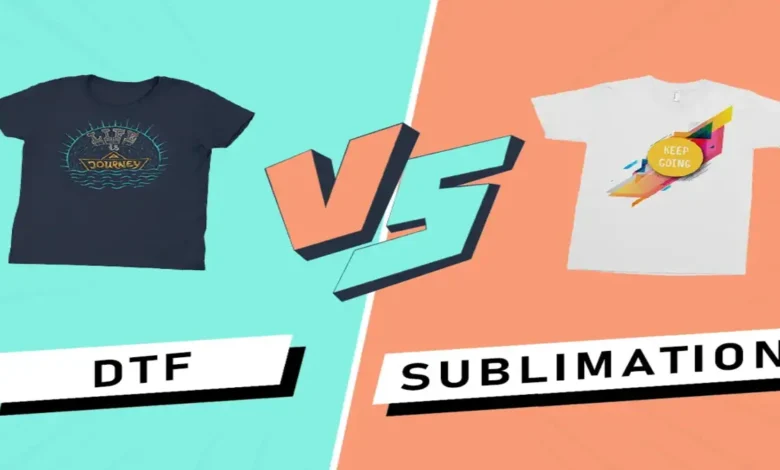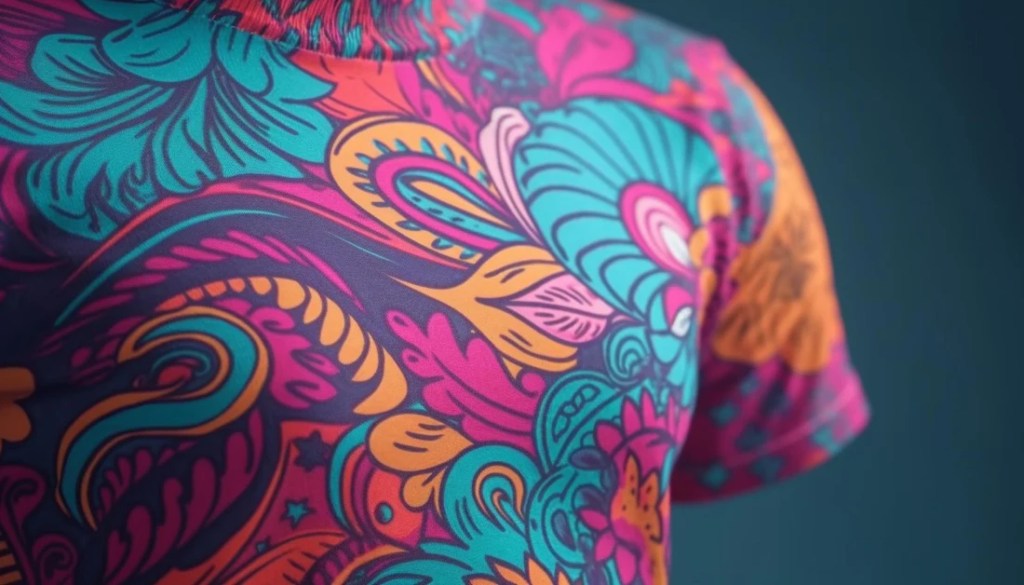DTF vs Sublimation: Which Printing Method is Right for You?

Understanding the Basics of DTF vs Sublimation Printing
Two of the most talked-about methods for fabric printing are DTF (direct-to-film) and sublimation printing. Both techniques offer unique advantages, but choosing the right one depends on factors like material compatibility, durability, and color vibrancy. Understanding how these methods work is essential to making an informed decision for your business or personal printing needs.
DTF printing involves printing designs onto a special film, which is then transferred to fabric using an adhesive powder and heat press. This method allows for vibrant prints on various materials, including cotton, polyester, and blends. On the other hand, sublimation printing works by converting ink into gas, which then bonds with polyester-based fabrics. This results in durable and vivid prints but limits the types of materials that can be used.
The Process of DTF Printing
DTF printing is gaining popularity due to its ability to print on various fabrics. The process begins with printing a design onto a PET (polyethylene terephthalate) film using a specialized inkjet printer. After printing, an adhesive powder is applied to the wet ink, ensuring that it sticks properly when transferred onto the fabric.
Once the adhesive is applied, the film is cured using heat, which solidifies the powder and prepares the print for transfer. The final step involves using a heat press to transfer the design onto the fabric. This results in a highly detailed and vibrant print that maintains its quality even after multiple washes.
How Sublimation Printing Works
DTF vs Sublimation printing is widely known for its ability to produce high-quality, permanent designs on polyester materials. The process starts with printing the design onto special sublimation paper using sublimation ink. The paper is then placed onto the fabric and subjected to high heat and pressure using a heat press.
As the temperature rises, the ink transforms into a gas, which then embeds itself into the fibers of the fabric. Since the ink becomes part of the fabric, sublimation prints do not crack, peel, or fade over time. However, this technique is limited to materials that contain polyester or have a polyester coating.
Material Compatibility: Which Method Works Best?
Material compatibility is one of the biggest factors when deciding between DTF vs Sublimation printing. Since DTF printing uses an adhesive layer, it can be applied to a wide range of fabrics, including cotton, polyester, silk, and blends. This makes it a versatile option for those looking to print on different types of apparel.
DTF vs Sublimation printing, however, is only effective on polyester fabrics or specially coated surfaces. While this ensures that the ink fuses seamlessly with the fabric, it limits the range of materials that can be used. If you primarily work with polyester, sublimation is an excellent choice, but if you need more versatility, DTF might be the better option.
Color Vibrancy and Print Quality

Both DTF vs Sublimation printing deliver high-quality prints, but there are some key differences in color vibrancy and detail. DTF prints tend to have a slightly raised texture due to the adhesive layer, which can add a unique effect to designs. The colors are bold and can be applied to both light and dark fabrics without losing their intensity.
Sublimation printing, on the other hand, produces exceptionally bright and vivid colors, especially on light-colored fabrics. Because the ink becomes part of the fabric rather than sitting on top, the prints are smooth and lightweight. This method is ideal for designs requiring intricate details and smooth gradients.
Durability and Washability
When it comes to durability, both methods offer long-lasting prints, but there are differences in how they hold up over time. DTF vs Sublimation prints are highly durable, withstanding repeated washing without cracking or peeling. The adhesive used in the process ensures that the design stays intact even after frequent use.
Sublimation prints are equally durable because the ink bonds with the fabric rather than resting on the surface. This means that the design does not fade or wash away over time. However, since sublimation is limited to polyester fabrics, the durability largely depends on the quality of the fabric itself.
Cost and Equipment Considerations
The cost of setting up a printing system plays a significant role in choosing between DTF vs Sublimation printing. DTF printing requires specialized ink, PET films, adhesive powder, and a heat press, which can be a significant initial investment. However, it offers the advantage of printing on a wide range of materials.
Sublimation printing also requires specialized ink, sublimation paper, and a heat press. While the startup costs are generally lower compared to DTF, the limitation to polyester materials may be a drawback for those looking to print on a variety of fabrics.
Applications and Use Cases
DTF printing is ideal for businesses that need flexibility in fabric choices. It works well for t-shirts, hoodies, tote bags, and other cotton-based products. The ability to print on both light and dark fabrics makes it a great choice for custom apparel businesses.
Sublimation printing is best suited for creating vibrant, high-quality prints on polyester apparel, mugs, phone cases, and other coated surfaces. It is particularly popular in the sportswear industry due to its durability and ability to produce seamless designs on synthetic fabrics.
Choosing Between DTF vs Sublimation
Deciding between DTF vs Sublimation depends on your specific needs and priorities. If versatility and material compatibility are your main concerns, DTF is the way to go. It allows you to print on various fabrics and colors, making it a practical option for a wide range of products.
If you prioritize print quality and durability on polyester fabrics, sublimation is a fantastic choice. The ability to achieve high-definition prints with vibrant colors makes it ideal for sportswear and promotional products.
Final Thoughts
Both DTF vs Sublimation printing have their own set of advantages and limitations. Understanding these differences can help you make an informed decision based on your business goals and the types of products you want to create. Whether you choose DTF for its versatility or sublimation for its superior color vibrancy, both methods offer excellent results when used correctly.





